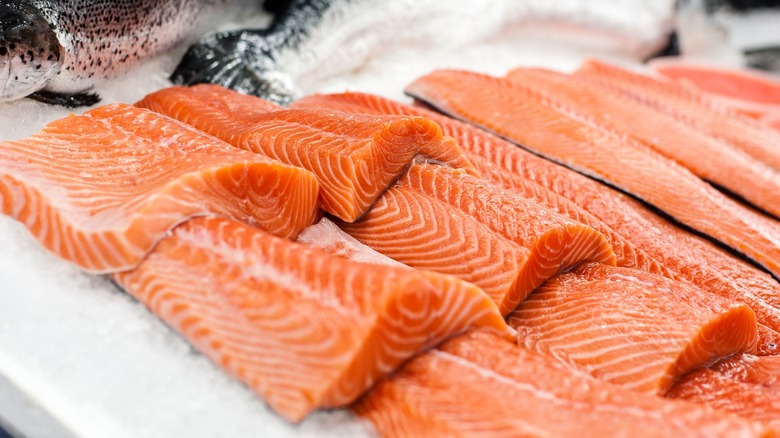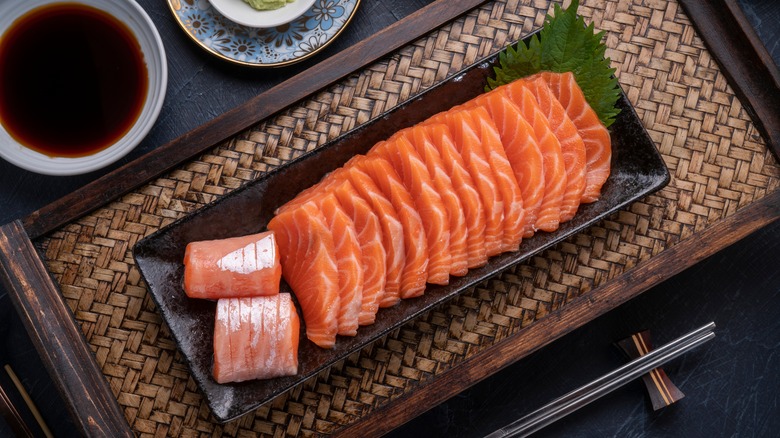Why You Shouldn't Rely On Color When Shopping For Salmon
There are plenty of benefits to adding salmon recipes to your weekly dinner menu. First and foremost, it provides plenty of nutritional benefits. Though its exact nutritional profile varies depending on the salmon type, for the most part, the fish is high in protein and low in fat, as well as loaded with vitamins such as B12 and B6. It also contains omega-3 fatty acids, which are important for proper cell function.
When it comes to preparation, there are a few different methods for salmon. It can be served raw, such as in sushi, or smoked, which is called lox. It can also be cooked fully in the oven or on the grill; all methods provide nutritional value.
If you're interested in purchasing salmon to prepare, you might be inclined to choose the brightest or deepest-colored fish at the market. However, you could be doing yourself a disservice by using only one factor to determine the best fish. Sometimes, color is not a clear indication of which salmon has the most freshness and flavor.
Salmon's color isn't always the best indicator of freshness
When we think of salmon, we think of its notable pinkish-red hue — it's easy to gravitate toward the brightest fish at the market because we interpret more color as meaning the freshest, best flavor. However, with salmon, there are other factors to consider; not all varieties are created equally in terms of appearance.
Sockeye salmon is likely the fish that comes to mind when you picture that bright hue; it tends to be the reddest variety because of its diet and where it lives. But other types, such as King salmon, are more sought after. Still, King salmon has a paler pink color because it's a bit fattier than sockeye. In this case, you'd be mistaken to assume that color is the only way to determine salmon's quality. Plus, farmed salmon are sometimes fed pink pellets to give their skin a pinker color, which can make them look brighter than the wild-caught varieties, though wild-caught salmon is often regarded as of higher quality than its farmed counterpart.
Tips for buying the highest-quality salmon
First and foremost, know what you're buying. There are plenty of salmon varieties, but for the highest quality, you will want to purchase King salmon. Prior to ending up at your local fish market, King salmon spends more time in the ocean than other types of fish. As a result, it is richer and fattier in flavor, making it the most desirable of the fish. However, it's important to note that King salmon is also the most expensive of its kind.
If you're fine with purchasing another type of salmon but are more concerned about freshness, examine more than the fish's color. Color is a factor but look for the lines throughout the fish. Are they white? If so, the fish is fresh; if they have lost that bright white color, it's likely getting old. The salmon should have a slight fishy smell upon sniffing it, but it definitely should not be an overwhelming scent; subtlety is key here. If you get close to it and are turned off by its scent, pass on it. Finally, don't be afraid to touch the salmon (wash your hands afterward). Make sure it doesn't feel slimy — a slimy feeling means it's likely past its best-by date.


